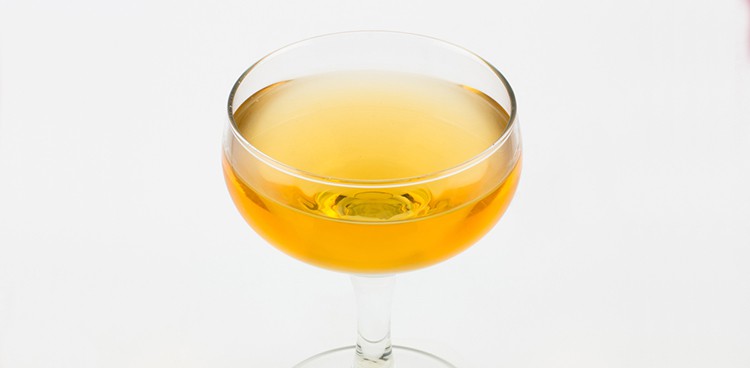
Ten years ago vermouth was largely considered a quick way to sully a cocktail. The bottles that made it to the United States weren’t very inspiring, especially after they’d sat open, oxidizing in the liquor cabinet for a few months.
But today there’s an array of new vermouths hitting the market, and the classics are earning fresh respect. Made with quality ingredients and treated like the white wines they are based on—kept chilled and poured fresh—vermouth is gaining favor as a drink in its own right.
But what is vermouth? At Dante, a New York City bar with a 20-bottle-strong vermouth list, I pose this question to Naren Young, the bar’s co-owner and all-around cocktail guru. “There’s so much diversity,” he says, pulling out a few selections. “It definitely requires a lot of tasting.”
While most vermouths are based on bright, acidic white wine and all are lightly fortified with alcohol—hovering around 16 to 18 percent ABV, about the same as a sherry—that’s about it for generalizations. The European Union requires only that vermouth take its “characteristic taste” from plants in the Artemisia genus, which contains around 300 species, from wormwood to daisies to tarragon.
US law is even more vague, specifying that the wine be “flavored with herbs and other natural aromatic flavoring materials.” Sutton Cellars in Sonoma, Calif., uses orange peel, chamomile, rosemary, and 14 other botanicals in its Brown Label vermouth; Hammer & Tongs in Portland, Ore., draws inspiration from African spices for its earthy L’Afrique and looks to China and South Asia to inform its bright, citrusy Sac’Résine. And at Uncouth Vermouth in Brooklyn, N.Y., founder Bianca Miraglia takes a hyperlocal approach, scouring local gardens, fields, and forests for everything from butternut squash to rhubarb, hops, and serrano peppers to create seasonal blends.
Young, whose inspiration for Dante is European cafés (where vermouth has long been a popular aperitif), sticks mainly to French and Italian bottles.
“I think of the French versions as being more aromatic than Italian ones,” Young says, pouring Dolin Dry, a clear, crisp vermouth made in Savoie that smells like an Alpine meadow, and Noilly Prat Ambré, a bottle from the south of France heavily infused with aromatics. Both are bright and refreshing, but the Ambré has the upper hand when paired with the cheese plate I ordered—its richer, hazelnutty flavors go toe-to-toe with several wedges and even stand up to a blue.
Dry Italian vermouths tend to be more robust than their French counterparts, Young adds. It’s no surprise, then, that Cocchi Vermouth di Torino, with its dried fig, fennel, and cocoa flavors, can handle the mustardy funk of a ripe Jasper Hill Farm Harbison. Yet it’s also bright and lively, refreshing after a bite of cheese.
Vermouth comes in sweet styles as well; often labeled “blanc” or “bianco,” they are dosed with a little sugar to curb the bitterness of the herbs. The few we try with the cheese just don’t work; most come across more candied than fruity. Red versions also tend to be sweet—in fact, most get their coloring from caramel. One exception is Martini & Rossi Gran Lusso, which takes its dark hue from barbera grapes. Juicy with a sweet cherry flavor and redolent of wild oregano, it’s a brilliant combination with a dry, salty morsel of aged pecorino. Although fish and fried bar snacks are vermouth’s traditional mates, it’s clear that the possibilities are far wider. Keep an open mind, and this pairing—and other vermouth and cheese couplings—might win you over, too.
Four to Try
Dolin Vermouth de Chambéry Dry + Old Chatham Sheepherding Company Nancy’s Hudson Valley Camembert
Noilly Prat Ambré + Consider Bardwell Barden Blue
Cocchi Vermouth di Torino + Jasper Hill Farm Harbison
Martini & Rossi Gran Lusso + MitiBleu
Feature Photo Credit: Andreas Argirakis | Shutterstock




